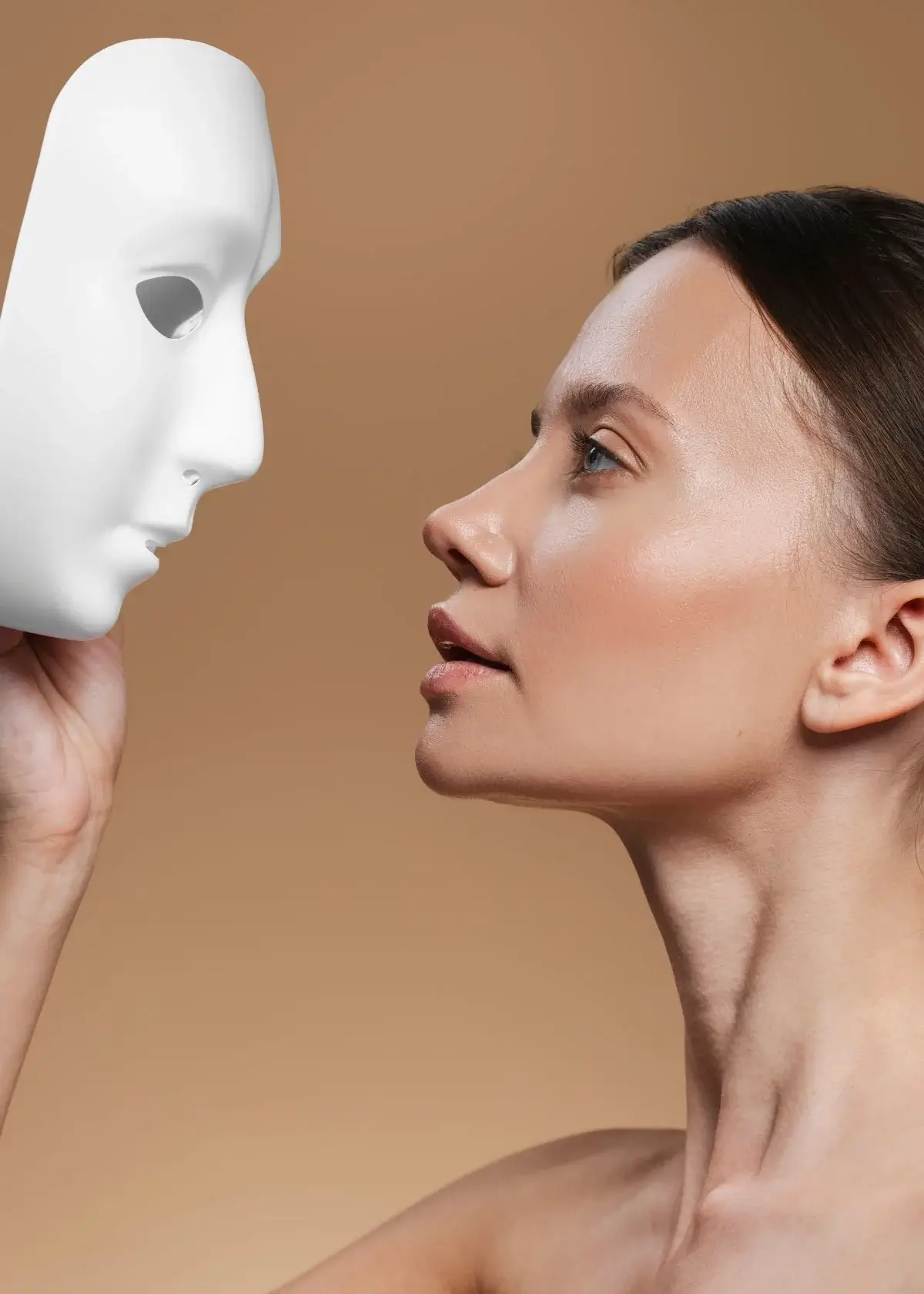LED face masks have taken the beauty industry by storm, promising to rejuvenate and enhance the skin's appearance. With so many options available, choosing the right LED face mask that suits your skincare needs can be overwhelming. This guide will walk you through the essential factors to consider when selecting an LED face mask, ensuring a personalized and effective skincare routine.
Understanding LED Face Masks
LED, or light-emitting diode, technology has gained popularity in the beauty world due to its numerous benefits for the skin. LED face masks use different coloured lights to target specific skin concerns, such as acne, wrinkles, and hyperpigmentation. Understanding how LED lights work and their unique skincare benefits is crucial in choosing the right mask.
Factors to Consider When Choosing an LED Face Mask
- Skin Concerns and Targeted Treatments: Identify your primary skin concerns and choose an LED mask with the specific light therapy needed. For example, blue light combats acne-causing bacteria, red light stimulates collagen production, and green light reduces pigmentation.
- LED Mask Features: Consider the features that matter most to you. Adjustable settings, mask design, and ease of use are important factors. Some masks offer multiple treatment modes or customizable settings to cater to your skincare goals.
- Safety and Certifications: Ensure that the LED face mask you choose meets safety standards and is certified by reputable organizations. Look for certifications such as FDA approval or compliance with medical-grade standards for added assurance.
Researching and Comparing LED Face Masks
- Reading Customer Reviews and Testimonials: Take the time to read reviews and testimonials from other users. Real-life experiences can provide valuable insights into the effectiveness and user-friendliness of different LED face masks.
- Comparing Specifications and Features: Compare specifications such as the number of LED lights, wavelength range, treatment duration, and coverage area. Look for additional features like built-in timers or adjustable intensity levels to enhance your experience.
- Seeking Recommendations from Trusted Sources: Consult dermatologists, estheticians, or beauty experts who can provide personalized recommendations based on your skin concerns. Their expertise and professional knowledge can guide you in making an informed decision.
Budget Considerations
- Pricing Range of LED Face Masks: LED face masks vary in price, depending on the brand, features, and quality. Set a budget that aligns with your skincare goals, and be mindful of the trade-offs between price and effectiveness.
- Weighing the Cost Against Desired Features and Benefits: Consider the value you'll gain from the features and benefits of the LED face mask. Evaluate whether the price is justified by the targeted treatments, convenience, and long-term benefits it offers.
Ensuring Safety and Effectiveness
- Checking for FDA Approval or Certification: Look for LED face masks that have been FDA-approved or have received certification from trusted regulatory bodies. This ensures that the mask meets safety standards and is backed by scientific evidence.
- Considering Medical-Grade Options for Specific Skin Conditions: If you have specific skin conditions or concerns, consult a dermatologist who can recommend medical-grade LED face masks tailored to your needs.
Choosing the right LED face mask is all about understanding your skin concerns, researching options, and considering the features, safety, and effectiveness. Following this guide, you can confidently select an LED face mask that aligns with your skincare goals, helping you achieve a radiant and healthy complexion. Remember, consistency and proper usage are key to maximizing the benefits of LED light therapy for your skin.
After conducting thorough research and analysis, we have curated the finest LED face masks for achieving radiant and healthy skin in 2024. These exceptional masks have garnered acclaim from experts and customers alike. Harnessing the power of LED light therapy, these masks effectively address various skin concerns, including acne, wrinkles, and overall rejuvenation. Click the link to delve deeper into this topic and uncover your new favourite LED face mask. Remember to select the one that best caters to your skincare needs and preferences.
What is the mechanism behind how LED face masks work?
LED face masks, utilizing low-level light therapy (LLLT), epitomize a sophisticated approach to skincare. These masks employ specific wavelengths, notably within the red and blue spectrum, to penetrate the skin at varying depths. The red light, a cornerstone of their effectiveness, targets cellular structures like the mitochondria. Doing so optimizes cellular energy production, notably adenosine triphosphate (ATP). Simultaneously, the blue light engages in a targeted assault on acne-causing bacteria, amplifying the versatility of LED masks in addressing an extensive array of skin concerns.

What is the ideal duration for using an LED face mask in a single session?
Navigating the optimal duration for LED face mask sessions requires a nuanced understanding of the delicate balance between efficacy and potential overexposure. Generally falling within the 15 to 20-minute range, this timeframe has been identified as the sweet spot. It allows the therapeutic light to permeate the skin sufficiently, triggering positive cellular responses without subjecting the skin to the risk of overstimulation. However, it is paramount to emphasize the device-specific nature of this recommendation, as light intensity and wavelengths may vary among different LED masks, necessitating customized durations for maximal efficacy.

What is the recommended frequency of using an LED face mask for noticeable results?
Embarking on a journey towards visible and sustained improvements through LED face masks demands a commitment to consistency. The consensus among skincare professionals leans towards integrating these devices into one's skincare routine 3 to 4 times a week. This frequency is carefully calibrated to strike a balance, ensuring a steady and progressive impact. It allows the skin to luxuriate in the therapeutic benefits of light therapy while also affording intervals for natural regeneration between sessions. Whether the goal is to address fine lines, wrinkles, or acne, a dedicated and routine-based approach amplifies the comprehensive benefits offered by LED face masks.

How can an LED face mask be integrated into a skincare routine?
The seamless integration of an LED face mask into an established skincare routine involves a strategic positioning that optimizes its efficacy. Placing the LED mask post-cleansing and preceding the application of serums or moisturizers is a meticulously orchestrated dance between the therapeutic light and the skin. This deliberate sequencing ensures direct and unimpeded interaction, maximizing the benefits. The timing of incorporating LED therapy may vary based on personal preferences and device-specific instructions.

How does an LED face mask impact skin texture and tone?
The transformative effects of LED face masks on skin texture and tone are a symphony of intricacies. The red light, acting as a catalyst for collagen and elastin production, is pivotal in enhancing skin elasticity and firmness. This, in turn, manifests as a refined texture with diminished fine lines. Concurrently, the blue light's targeted assault on acne-causing bacteria contributes significantly to a clearer complexion, fostering an even skin tone.
Should I avoid using an LED face mask for certain skincare products?
Navigating the synergy between LED face masks and skincare products requires a discerning approach. Caution is advised concerning products containing photosensitizing ingredients during LED face mask sessions. Ingredients such as retinoids and specific acids (AHAs/BHAs) may heighten light sensitivity, necessitating avoidance to mitigate the risk of potential irritation and adverse reactions.







